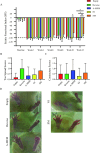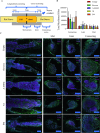Transplantation of Neural Progenitor Cells Derived from Stem Cells from Apical Papilla Through Small-Molecule Induction in a Rat Model of Sciatic Nerve Injury
- PMID: 38904732
- PMCID: PMC11286922
- DOI: 10.1007/s13770-024-00648-y
Transplantation of Neural Progenitor Cells Derived from Stem Cells from Apical Papilla Through Small-Molecule Induction in a Rat Model of Sciatic Nerve Injury
Abstract
Background: Stem cell-based transplantation therapy holds promise for peripheral nerve injury treatment, but adult availability is limited. A cell culture protocol utilizing a small-molecule cocktail effectively reprogrammed stem cells from apical papilla (SCAPs) into neural progenitor cells, subsequently differentiating into neuron-like cells. This study aims to evaluate neural-induced SCAPs, with and without small-molecule cocktail, for sciatic nerve repair potential.
Methods: A scaffold-free cell sheet technique was used to construct a three-dimensional cell sheet. Subsequently, this cell sheet was carefully rolled into a tube and seamlessly inserted into a collagen conduit, which was then transplanted into a 5 mm sciatic nerve injury rat model. Functional sciatic nerve regeneration was evaluated via toe spread test, walking track analysis and gastrocnemius muscle weight. Additionally, degree of sciatic nerve regeneration was determined based on total amount of myelinated fibers.
Results: Small-molecule cocktail induced SCAPs enhanced motor function recovery, evident in improved sciatic function index and gastrocnemius muscle retention. We also observed better host myelinated fiber retention than undifferentiated SCAPs or neural-induced SCAPs without small-molecule cocktail. However, clusters of neuron-like cell bodies (surrounded by sparse myelinated fibers) were found in all cell sheet-implanted groups in the implantation region. This suggests that while the implanted cells likely survived transplantation, integration was poor and would likely hinder long-term recovery by occupying the space needed for host nerve fibers to project through.
Conclusion: Neural-induced SCAPs with small-molecule cocktail demonstrated promising benefits for nerve repair; further research is needed to improve its integration and optimize its potential for long-term recovery.
Keywords: Cell sheet engineering; Nerve conduit; Peripheral nerve regeneration; SCAPs; Stem cells.
© 2024. The Author(s).
Conflict of interest statement
The authors declare that there are no commercial or financial conflict of interest in conducting this research.
Figures






References
Publication types
MeSH terms
Grants and funding
LinkOut - more resources
Full Text Sources
